Clancy Tucker's Blog, page 166
December 17, 2017
18 December 2017 - EARTHWORMS
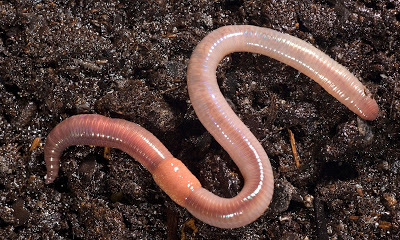
EARTHWORMS
G'day folks,
An earthworm is a tube-shaped, segmented worm found in the phylum Annelida. Earthworms are commonly found living in soil, feeding on live and dead organic matter. An earthworm's digestive system runs through the length of its body.They are also a great asset to any garden.
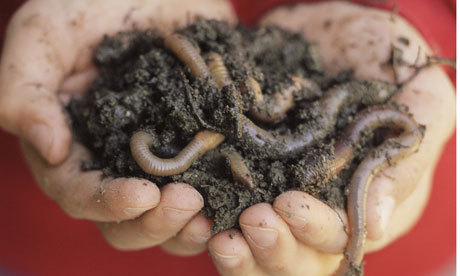

Earthworms are hermaphrodites. Each has both male and female sex organs, but they cannot fertilize themselves. Earthworms spend most of their lives underground, creating complex burrow networks. They make an essential contribution to soil fertility and are therefore very important in gardens and of farm land.
Quick FactsType: InvertebrateDiet: HerbivoreLifespan: Up to 6 yearsSize: Up to 35 cm, although typically around 8 cmWeight: Up to 11gHabitat: SoilRange: Europe, Asia and North AmericaScientific name: Lumbricus terrestris Facts About the Earthworms
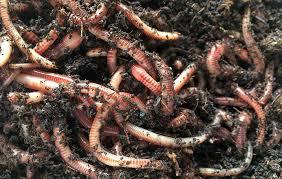
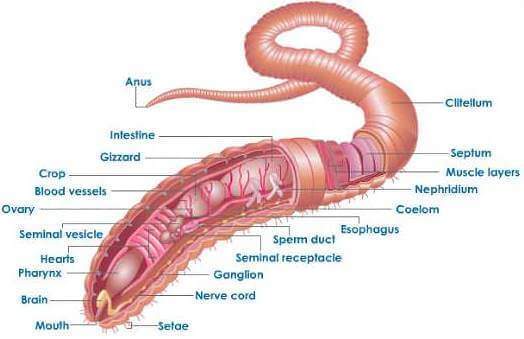 The earthworm is such a familiar creature that it is rarely given a second thought, yet its contribution to soil fertility is enormous. They tunnel through the ground, eating their way through the soil. They also drag leaves and other plant debris down into the soil, which allows air to enter it and water to drain through. Their activities over millions of years have been vital in creating rich, fertile soils from dense, infertile clays.Many animals get their food from the soil, but the earthworm eats the soil itself. It crunches it up in its muscular stomach, digests what it can (the organic material that is mixed with the mineral fragments) and ejects the rest.Earthworms cast from one square metre of meadow were weighed over the course of one year. It emerged that the worms brought about 8kg of soil to the surface annually.As the earthworm spends most of its life underground, ploughing through the soil and creating complex burrow networks (that may extend 2m or more beneath the surface), their bodies are basically like a tube of muscle arranged in two layers. One set of fibres run lengthways and another run widthways like a corset around its body. Tightening the ‘corset’ forces the worm’s head forward. A wave of contractions then passes back down the body, squeezing more of the worm forward until the long muscles take over to pull up the tail.Earthworms have tiny retractile bristles along the body which help give it grip and a slippery mucus covering, allowing the worm to move through even the hardest earth.The thin-skinned earthworm has no resistance to the sun’s ultra-violet radiation, so daylight can be fatal and they will usually only be found on the surface in dull, wet weather.Earthworms will anchor their tail in its burrow and at any sudden noise it will slither back into the earth.Earthworms are hermaphrodites. Each has both male and female sex organs. However, they cannot fertilize themselves. They need to mate with another worm in order to exchange genetic material.Earthworms are attracted to one another by scent. Their mating ritual involves the two worms lying head-to-tail on the surface of the soil and exchange sperm while bound together in a mucus covering.Earthworms can contain up to 20 eggs which are sealed up to form a cocoon and which can survive extreme weathers, but usually only one worm emerges from it. Unfortunately for the earthworm, it falls prey to just about most animals and birds, but the mole is its greatest threat as one mole can eat up to 50 earthworms in one day and they consume more in the winter. If an earthworm loses one end of its body it may grow a replacement, however, if it is cut in half, it dies. Contrary to common belief, they do not become two new worms. Some gardeners poison earthworms to eliminate worm-casts (droppings). This damages the lawn and animals and birds preying on the worm more than it damages the earthworm population. Fossilized worms, similar to earthworms, have been found in rocks laid down 600 million years ago.
The earthworm is such a familiar creature that it is rarely given a second thought, yet its contribution to soil fertility is enormous. They tunnel through the ground, eating their way through the soil. They also drag leaves and other plant debris down into the soil, which allows air to enter it and water to drain through. Their activities over millions of years have been vital in creating rich, fertile soils from dense, infertile clays.Many animals get their food from the soil, but the earthworm eats the soil itself. It crunches it up in its muscular stomach, digests what it can (the organic material that is mixed with the mineral fragments) and ejects the rest.Earthworms cast from one square metre of meadow were weighed over the course of one year. It emerged that the worms brought about 8kg of soil to the surface annually.As the earthworm spends most of its life underground, ploughing through the soil and creating complex burrow networks (that may extend 2m or more beneath the surface), their bodies are basically like a tube of muscle arranged in two layers. One set of fibres run lengthways and another run widthways like a corset around its body. Tightening the ‘corset’ forces the worm’s head forward. A wave of contractions then passes back down the body, squeezing more of the worm forward until the long muscles take over to pull up the tail.Earthworms have tiny retractile bristles along the body which help give it grip and a slippery mucus covering, allowing the worm to move through even the hardest earth.The thin-skinned earthworm has no resistance to the sun’s ultra-violet radiation, so daylight can be fatal and they will usually only be found on the surface in dull, wet weather.Earthworms will anchor their tail in its burrow and at any sudden noise it will slither back into the earth.Earthworms are hermaphrodites. Each has both male and female sex organs. However, they cannot fertilize themselves. They need to mate with another worm in order to exchange genetic material.Earthworms are attracted to one another by scent. Their mating ritual involves the two worms lying head-to-tail on the surface of the soil and exchange sperm while bound together in a mucus covering.Earthworms can contain up to 20 eggs which are sealed up to form a cocoon and which can survive extreme weathers, but usually only one worm emerges from it. Unfortunately for the earthworm, it falls prey to just about most animals and birds, but the mole is its greatest threat as one mole can eat up to 50 earthworms in one day and they consume more in the winter. If an earthworm loses one end of its body it may grow a replacement, however, if it is cut in half, it dies. Contrary to common belief, they do not become two new worms. Some gardeners poison earthworms to eliminate worm-casts (droppings). This damages the lawn and animals and birds preying on the worm more than it damages the earthworm population. Fossilized worms, similar to earthworms, have been found in rocks laid down 600 million years ago.  Clancy's comment: I love these creatures. Great for the garden, and also for fishing. Yes, I have a small worm farm.
Clancy's comment: I love these creatures. Great for the garden, and also for fishing. Yes, I have a small worm farm.I'm ...


Published on December 17, 2017 13:31
December 16, 2017
17 December 2017 - PAINTING WITH WOOL
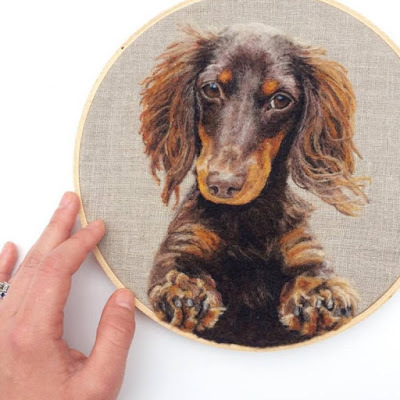
PAINTING WITH WOOL
G'day folks,
I've posted a few posts over the years on folks who are very creative. Check out this work.
Creating hyper-realistic animal portraits with a paintbrush or pencil is a difficult skill that only the world’s most talented artists can master, but doing it with just a needle and wool felt sounds downright impossible. That only makes “wool painter” Dani Ives’ work that much more impressive.
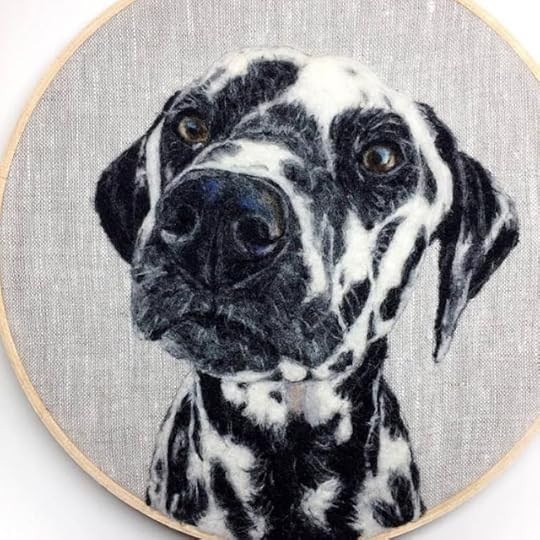
Looking at Dani Ives’ impressive portfolio of “wool paintings” it’s hard to believe that she only uses a barbed felting needle to manipulate colored strands of wool on a basic foam pad, in order to achieve such impressive results. The self-taught artist apparently developed her own technique, which involves pushing the colored wool through the base before pulling it back through, which helped her push the boundaries of this centuries-old art form.
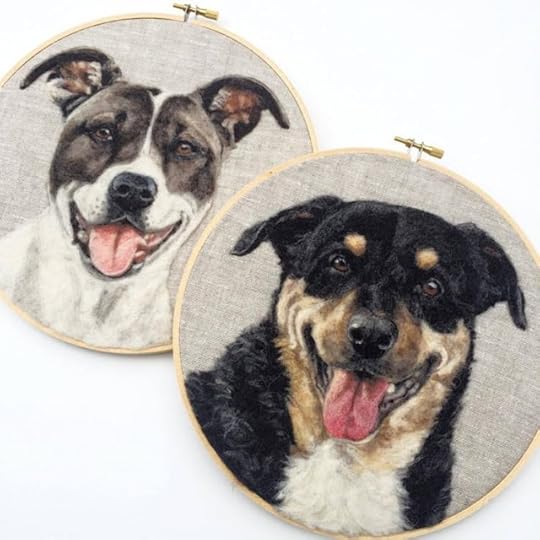
Born in Mountain Home, Arkansas, Dani grew up surrounded by nature, and it has always served as the main inspiration for her incredible artworks. She was always interested in art, and even attended Arkansas Governor’s School to study art while in high school, but decided to pursue a BA in Biology, at university, and received a masters in Conservation Education. She got a job at Springfield Zoo, and it seemed that working with animals would take priority over her artistic pursues, but then a friend there introduced her to wool felting.

Dani started her journey into the world of felting by creating “cute 3-d animals and then pincushions and jewelry”, but one day, she got the idea to flatten her design and turn into a wool painting. She felt that using the needle as a paintbrush and the wool as paint filled an artistic gap, so she stuck to it, eventually honing her skill to an incredible level.

Once she became confident in her talent of painting with wool, Dani Ives started posting photos of her creations on Instagram,and she quickly built a large following of fans who liked and shared her every post. Orders for custom pieces started coming in, and the demand soon got so crazy that she decided to quit her job at the zoo and dedicate all her time to wool painting.

Apart from taking custom orders via social media and selling her creations at Etsy, Dani Ives also holds workshops around the United States and offers online course on wool felting. If you’re looking to learn from a master, you probably won’t find a better teacher.
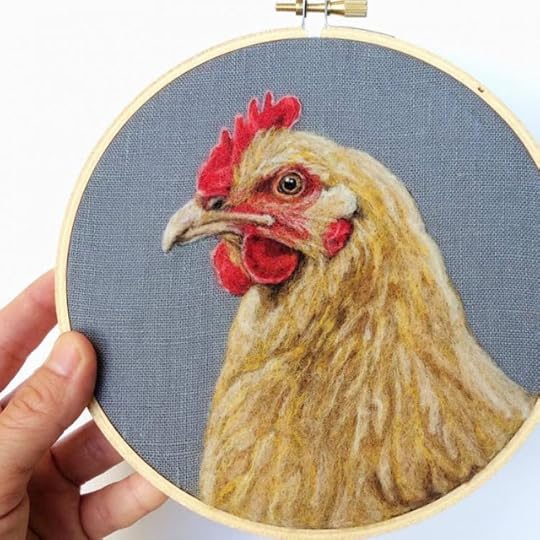
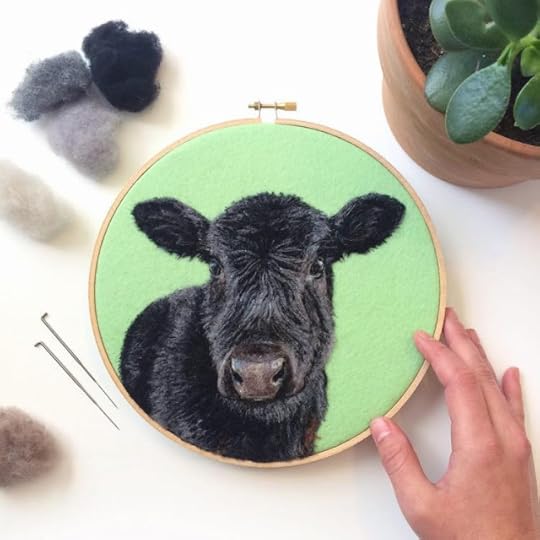


Clancy's comment: Wow, pretty clever, eh?
I'm ....
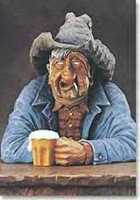

Published on December 16, 2017 12:00
December 15, 2017
16 December 2017 - JASON NELSON - BLOG GUEST
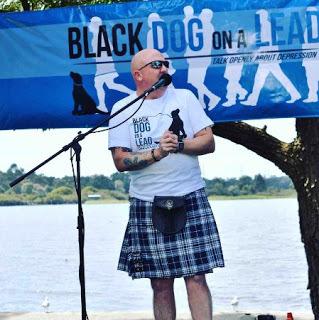
JASON NELSON- BLOG GUEST -
G'day folks,
I'm very pleased to introduce a man who has had a very interesting background, and doing some great work.
Welcome, Jason ...
1. Tell us about you and what you do.
I’m 45 years old, currently employed in the public service as a Senior Investigator. I’ve been married for 22 years to my wife Emma and we have two beautiful grown up girls Jade and Holly.
We moved to Australia from the UK in 2006 and still haven’t ben back for a visit.
I’m a Royal Navy veteran and former UK and WA Police Officer. I live with PTSD, Depression and Anxiety, I’m also a suicide survivor
2. What was the happiest moment of your life?By far the birth of my two girls, noting compares to that
3. What was the saddest moment?This is a difficult one because of the amount trauma I have endured. But just on a very personal level the death of my Nan.
4. What surprised you most?If this is a general question not related to question 3. The thing that surprises me most is my own resilience, when I reflect on what I have been through, I’m still not sure why I am still here and growing as a person.
5. What was your greatest disappointment?I try not to look at things in a negative way such as disappointments or regrets, I try to focus on things as life lessons and I have had plenty. I suppose if I was to choose to do something I could revisit and do differently it would be to report being sexually assaulted when I was 13 rather than keeping it inside a carrying around for 32 like I did and also work harder at school. That being said high school was a difficult time of my life after being sexually assaulted and keeping it to myself so I was operating in survival mode in any which way I could. Also if I had reported it maybe others wouldn’t have fallen victim too.

6. Who did you misjudge? Why?I try not to misjudge anyone but, if we’re honest we’re all human and guilty of it at times. When I have misjudged it has been, like for many, just the lack of understanding, education and misinformation. I used to misjudge the homeless until I started buying them food and sitting down to listen to their stories.
7. What or who was your biggest challenge?I see myself as my biggest challenge, it is said self-care and self-compassion are the most difficult things to master and I forget to do that too often while and try to strive forward and accomplish my goals, dreams and aspirations.
Also occasionally I have dips in self-belief and whether I’m worthy or not to achieve things or be the person I want to be.That being said I love a challenge, I love to push myself beyond what I think my physical limits are.
8. What has been your biggest regret?See Question 5. I think living in the past can be a mentally tiring place to visit. I prefer not to dwell on past mistakes, worries or doubts and rather on concentrate of accomplishing my future goals one day at a time. I’m a big dreamer and I like to dream BIG!!
9. What would be your dying comment? Why?‘Be foolish enough to believe and above all love each other’Sometimes we have to be foolish enough to believe in what we can achieve, so many people in life don’t strive to achieve what they want because of then most unlikely, illogical and meaningless excuses based without substance.
I’m not necessarily talking about monetary or material things, I’m talking about holistic and meaningful goals encompassing mind, body and spirit.
As for LOVE, the world is just such a much better place with Love at its centre at an individual and wider community level.
10. Who or what stunned you the most?Depends on what level. The tragic death of my mate Pete during the early hours of my wedding. Pete and I joined the Royal Navy the same day, and shared the same birthday and also served in the Gulf at the same time. Sadly he died on my wedding day. I still grieve for him and his family (who with I am extremely close) to this day. So now and forever more I have two days of remembrance for Pete a year and have a tribute to him tattooed on my right bicep.
Secondly, was the attempted suicide of my youngest daughter 2 years ago while she was battling Depression, Anxiety and what we now know is Borderline Personality Disorder. This was the biggest changing moment and shift in my life.
11. What would you like written on your tombstone? Why?‘INVICTUS - Was foolish enough to believe in himself and others’I believe am unconquerable, regardless on how my life ends, it will be on my terms and while I walk this place I really want to be remembered as making a difference.
12. Who would you rather have not met? Why?I‘ve had plenty of bad experiences with people but I try and take to positives from it, the life lessons. The only one I suppose it the person that sexually assaulted me when I was 13, I can’t currently name him (yet) as it is currently subject to judicial proceedings since I came forward earlier this year.
13. Who were you most envious of? Why?I get envious and uncomfortable with people that have been given a gift and chose not to use it for the good of many others.I get especially discontented of people who health wealth beyond their means and look down upon others and do nothing to help lift others up given their ability to do so.
14. Who did you forgive – for doing something you never thought you’d forgive?Back when I was a teenager I was given a beating by a group of lads who thought I’d stolen money from one of their houses. It was actually someone else who named me to deflect attention from the crime he had committed himself. Sometime afterwards I met him and listened to what he was going through at the time and forgave him.
15. What was your greatest moment in your life?I’ve been lucky to experience many good moments in my life. Aside from the birth of my girls and marrying my wife, choosing Australia as our home has to be the best.
16. What is your greatest achievement?Saving another life has to be, I’ve saved a persons life by giving them CPR after they drowned, breathing life back into another cannot be surpassed.
Now I try and do that by preventing people from thinking about suicide.
I’ve still yet to achieve it. My plan is to get a campervan and travel Australia while helping others with their mental fitness recovery.
17. What personal traits would you like to have in your next life?Love, warmth, generosity.
18. What advice would you give to world leaders?Stop politicising religion. Remove poverty. The smallest population of multi-billionaires have enough resources and financial wealth to eradicate world poverty, but choose not to.
19. What advice would you give to parents today?Keep your children off smartphone and social media for as long as humanly possible.
20. Who would you choose to be stuck on a desert island with?If it was a single person this would be a difficult decision, but probably someone I could learn so much from such as Ghandi, Mohammad Ali or John Lennon
21. Have any heroes? Why? Who?My Dad, he is my biggest role model, a humble, loving a self-educated man. He has and continues to teach me so much.My mate Daryl Howe, runs marathons while living with Cerebral Palsy.
Both my Grandfathers both fought in WWII but whom died before I had chance to join the military myself and get to know more about their time serving
I have sporting heroes and people that inspire me each in their own special way
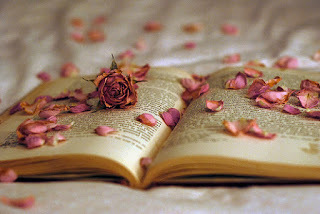
22. What are the greatest legacies you will leave behind?Hopefully I will in someway have made a difference in how the wider community see, understand and interact with people that live with a mental illnessTo know that I have made my family and friends proud
23. What’s lacking in the world today?Empathy on so many levels. When we open our minds up to understand through active listening tolerance in each other would improve.
24. Any pearls of wisdom for the rest of us?There is an opportunity in every crisis through the smallest beliefIt’s ok to fall, just keep falling forwardTravel one step at a time and reach for one goal at a time, that is the path to real accomplishmentEach of us is wonderful, rare and unique so work on that rather than trying to be someone elseSome body cannot save everyone, but everyone has the ability to save somebody
25. What would be the last sentence you ever write?Do not mourn me, celebrate with me and above all, listen and love, life is too short not to
26. What inspired you most?Coming so close to death personally and seeing my daughter attempt suicide. This has gifted me the passion and drive to make difference
27. Who or what made you laugh the most?I love a good belly laugh, and even with all I have endured I have had so many times in my life that have made me laugh.It is hard for me to pick one without doing injustice to the other, it’s a time, place, person and circumstance thing. Easier to explain verbally than in written form.
28. What would be your top three chosen careers in your next life?Counsellor, Life-coach and Writer
29. What is your prime focus in life today?The physical and mental health of my family and I. Trying to carve a future career in the mental health sector
30. Do you have any fear of doing something wrong?No more than any other person. Life is one big learning curve.
31. If or when you reflect on your past, can you identify any world events that you believe had a significant impact on you? The death of Princess Diana. I had many interactions with the Royal family as Prince Andrew HRH the Duke of York was the Senior Pilot on my Squadron for a while and I had a good relationship with him. I never got to meet Diana but her death really touched me.
9/11 – remember it well, I was a Detective in the police in the UK, and the guys I was working with on the day, we came in and watched it unfolded in the canteen in the police station. I recall the colour drain out of his face because his brother used to work in the North tower. Thankfully he was one of the lucky ones.
32. Do you think one can live a purposeful life without knowing the meaning of life?Yes, living a purposeful life is an individual thing, what is the purpose for one person can be completely different for another. I think as long as that purpose has s sense of belonging and positive contribution to the community it should be supported.
33. From your perspective - what is the way forward for the world? Destigmatisation, unpoliticising religion and showing greater empathy to each other as human being

34. Imagine that you were given a chance to live again, what will you do first and what will you do differently? If I could live my life again, I’m not sure I’d do much differently. I probably wouldn’t be as wasteful as I was when I was younger both financially and in general
35. Do you have a bucket list? Tell us more.To have a honeymoon with my wife, we have yet to have one for obvious reasons.To travel more and soak up as many cultures as I can many destinations on the list.To run a marathon in each state and territory in Australia, and on each continent of the worldTo work for myself, for others by sharing my lived experience
36. Any great claims to fame? Co-founder of the Rogue Runners Club AustraliaServing in the Royal NavyWorked with Prince Andrew. Had dinner with Prince Phillip. Met the Queen, Prince Charles, Prince William and Prince Harry.Had the honour of meeting many sporting stars/heroes such as Kenny Daglish, Ian Rush, Steven Gerrard, Libby Trickett, Justin Langer, Frank BrunoJohn Lennon’s sister Julia Bird was my teacher in high school 37. Anything you’d like to add?
Should anyone wish to engage me for public speaking please do not hesitate in getting in contact, happy to provide recent experience examples if necessary

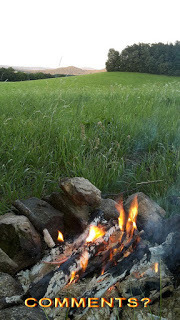
Clancy's comment: Thank you, Jason. Keep doing what you do.
I'm ...


Published on December 15, 2017 13:02
December 14, 2017
15 December 2017 - CHINESE FOOTBALL TEAM PAINTS STADIUM GOLD

CHINESE FOOTBALL TEAM PAINTS STADIUM GOLD
G'day folks,
A top-tier Chinese football team recently painted their whole stadium from their traditional color, blue, to bright gold, in order to change their luck. It may sound stupid, but they don’t care, because it actually worked!
Last month, after a dismal run that saw their team win a single home game in four months, the Guangzhou R&F football club made the desperate decision to repaint the whole stadium and surrounding facility gold, to improve their feng shui. The decision sounds even crazier if you consider that they had just renovated the stadium last year, painting the whole thing blue, to match their club colors.
But the team had only won a single match on home turf since March 12, and they had run out of people and things to blame for their results, so, in desperation, management decided to follow the teachings of feng shui. They chose gold, because it apparently symbolizes completeness and fulfilment.

In mid July, everything, from the seats to the concrete and even the wall around the Guangzhou R&F were repainted gold, in hopes that their luck would finally change. And, believe it or not, it actually did, in a big way. The Guangzhou R&F football team has won its last four CSL home games since the gold makeover, scoring at least 4 goals per match, a feat that has catapulted the team, to third place in the Chinese Super League. They also beat their local rivals, the popular Guangzhou Evergrande, in a cup game.

The team didn’t even try to hide the fact that they believe changing the color of the stadium is responsible for their winning streak. Here’s what R&F coach Dragan Stojkovic wrote on the club’s official website: “After we changed the color of our home stadium, we got five wins and a high goal-scoring rate as well. The gold color of our home stadium is pretty nice, no need to change it now.”

Feng shui is really popular in China and other parts of Asia, with people relying on its teachings when building their homes and offices to maximize their luck and monetary gains.

Clancy's comment: Mm ... I might paint my study in gold and see what happens. What do you think? It might boost book sales, but I'd have to wear sunglasses to work.
I'm ...
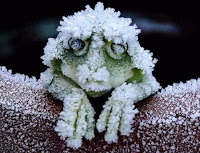

Published on December 14, 2017 12:21
December 13, 2017
14 December 2017 - THE WILD DINGO OF AUSTRALIA
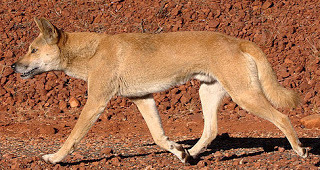
THE WILD DINGO OF AUSTRALIA
G'day folks,
welcome to some interesting facts about one of the cleanest looking dogs in the world. The dingo is a type of feral dog native to Australia. The dingo is the largest terrestrial predator in Australia, and plays an important role as an apex predator.
It is believed that the dingo is descended from the Asian wolf, Canis lupus pallipes.The earliest dingo skeleton found is 3500 years old and it is thought dingoes arrived in Australia between 4,600 –18, 300 years ago.
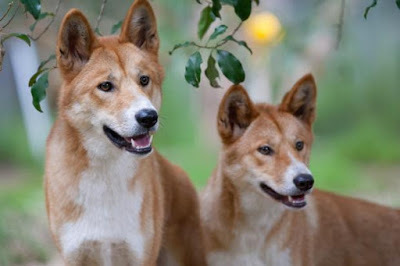
Amazing Facts About the DingoOriginally a domestic dog thought to have been brought to Australia by the Aborigines’, though studies show it was more feasible dingoes arrived over land bridges that existed than by being introduced by humans over the sea. The dingo is a tireless hunter and will cross large expanses of desert and open bush in search of its prey.Similar to the domestic dog, in particular the German Shepherd, their coat is usually reddish-brown with irregular white markings, although the colouring varies across its range. The colour of a dingo can determine where it is from, for example, dark brown coats derive from forested area and a more typical tan colour is associated with arid land. It has a long pointed muzzle and a mouth containing large molars and long canine teeth. Their ears are quite large, pointed and permanently erect. Their tails are bushy and have a distinctive white tip.The female obtains some of the moisture she needs to produce milk for her puppies by eating their droppings.It was known that a female moved a litter of six pups individually over 9km in a single night, a total journey of 180km. The loose family group in which the dingo lives is kept within a core territory which it protects. Its total range, however, is far larger and often overlaps with that of other groups. A young male dingo can forage over as wide an area as 60km in a night and may join a local pack when food is abundant, but when it is scarce the pack drives any newcomer away.
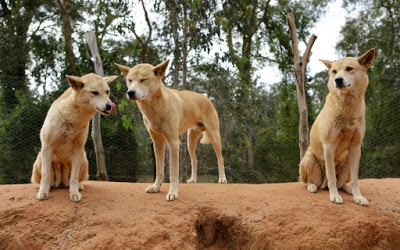
Healthy adults take responsibility to keep old and weak animals away from food and water so that they quickly die.Both male and female dingoes take responsibility for rearing their young. The females will chose the same hidden, sheltered place each year to raise their young, provided it remains undisturbed. After the pups are born, the parents move downwind of their burrow so that they can watch for predators without drawing attention to the pups’ hiding place. Both parents will collect food for their pups, travelling long distances from the burrow and leaving potential prey nearby and untouched, so the pups can later learn to hunt it for themselves. Although fully weaned, a pup may still approach its mother for regurgitated food.Young dingoes will fight aggressively in a bid to establish their place in the pecking order of the pack. However, their teamwork and stamina are the keys to hunting successfully as a pack.Dingoes hunt mainly at night and when in a pack they will target and kill large animals, such as a kangaroo. When a pack kills more than its members can eat, they bury the remaining food, digging it up to eat later. They will also eat eggs, grubs and wildfowl when other prey is scarce.Similar to the fox, the dingo has traditionally been accused of preying on sheep. However, analysis of the stomach contents of dingoes from Western Australia has shown that sheep are not a significant part of its diet.When the first European settlers arrived in Australia, they claimed to have found Aborigine women suckling dingo pups.The early Aboriginals used tamed dingoes as living hot water bottles to keep them warm at night.
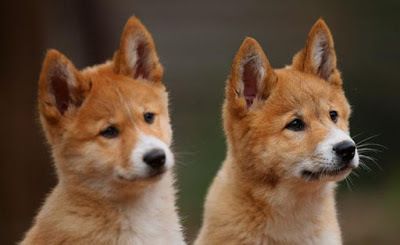
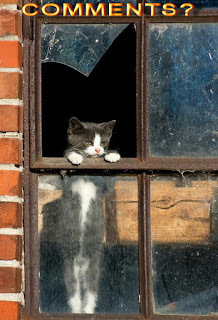
Clancy's comment: I always liked taking photographs of these wild dogs when I lived in the Northern Territory, but they were fairly shy creatures. They certainly are very attractive dogs.I'm ....
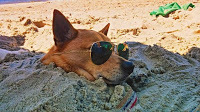
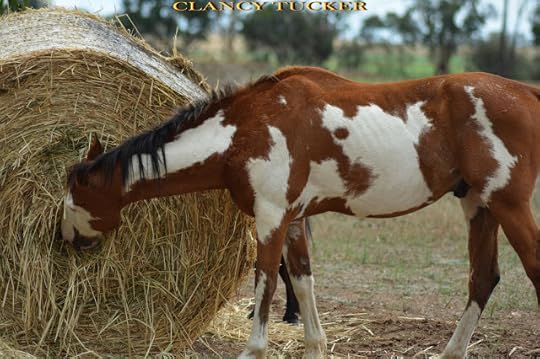
Published on December 13, 2017 12:19
December 12, 2017
13 December 2017 - CROWN SHYNESS – AN AMAZING PHENOMENON

CROWN SHYNESS – AN AMAZING PHENOMENON -
G'day folks,
I bet most of you know nothing about this. I certainly didn't.
Crown shyness or canopy disengagement is a mysterious natural phenomenon in which the crowns of some tree species do not touch each other, but are separated by a gap clearly visible from ground level. The effect usually occurs between trees of the same species, but has also been observed between trees of different species.

The Crown Shyness phenomenon was first documented in scientific literature during the 1920s, but researchers have since not been able to reach a consensus regarding its causes. There are many theories going around in scientific circles, most of which make sense, but no one has been able to prove without the shadow of a doubt why some trees avoid touching each other. But perhaps it’s this mystery, along with its striking appearance, that makes crown shyness such a fascinating phenomenon.
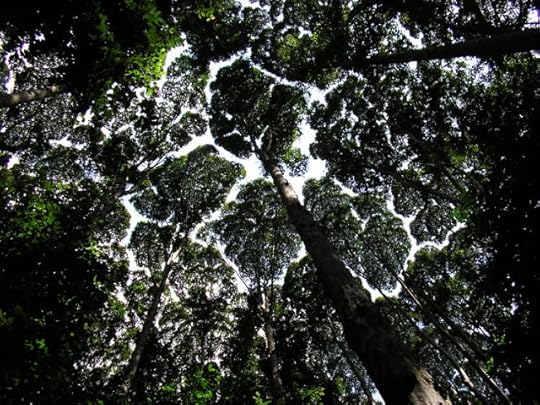
In his 1955 book “Growth Habits of the Eucalypts”, Australian forester M.R. Jacobs writes that the growing tips of the trees are sensitive to abrasion, which results in the canopy gaps known as crown shyness. In 1986, this theory was also supported by Dr Miguel Franco, who noticed that the branches of Picea sitchensis (Sitka spruce) and Larix kaempferi trees suffered physical damage during abrasion, which killed the leading branches. Some experiments have shown that if trees displaying crown shyness are artificially prevented from swaying in the wind and colliding with each other, they gradually fill up the gaps between them.

But while the above theory is arguably the most widespread, it’s certainly not the only one. Some scientists have suggested that crown shyness is a mechanism to stop the spreading of leaf-eating insects. These pests have been known to work together and create structures that extend up to 10 cm off of tree branches, in order to reach other plants, so the gaps are the tree’s natural defense mechanism.
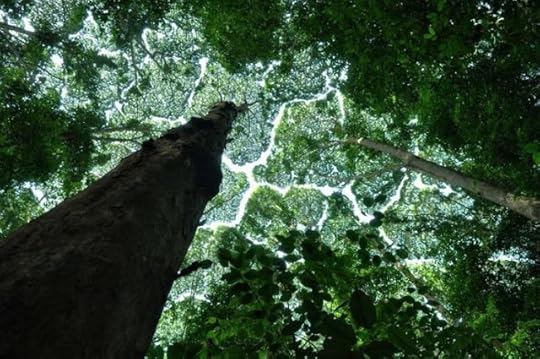
Amusing Planet cites one Malaysian scholar who studied the Dryobalanops aromatica trees, but found no traces of abrasions, despite their clear crown shyness. Instead, he suggests that the growing tips of the trees were sensitive to light levels and stopped growing when they got too close to other trees. Science also supports this theory, as plants are able to sense how close they are to other plants by detecting a specific frequency of light called far-red light.
This allows them to compete with their neighbours over light needed to keep growing.
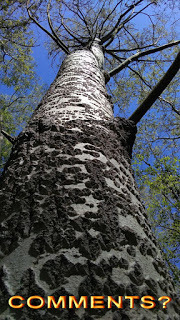
Clancy's comment: Wow. Wonders never cease, eh?I'm ...

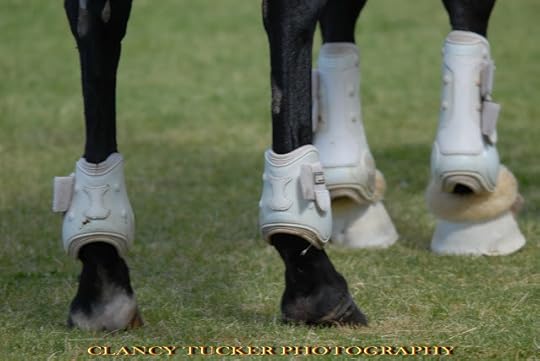
Published on December 12, 2017 12:06
December 11, 2017
12 December 2017 - ENGAGEMENT RING FOUND 13 YEARS LATER

ENGAGEMENT RING FOUND 13 YEARS LATER
G'day folks,
Do you believe in luck? Mm ... Read on ...
It was September of 2004, when Mary Grams, of Alberta, Canada, lost her diamond-encrusted engagement ring, while working on her family farm. She spent days looking for it, but to no avail. Last week, nearly 13 years later, her daughter in law plucked a weird-looking carrot from the garden, with a diamond ring tightly wrapped around it.

“I went to the garden for something and I saw this long weed. For some reason, I picked it up and it must have caught on something and pulled [the ring] off,” 84-year-old Mary Grams recalls about the day she lost her engagement ring, in 2004. She had worn it on her finger since 1951, a year before she married her husband, Norman. “We looked high and low on our hands and knees. We couldn’t find it. I thought for sure either they rototilled it or something happened to it.”
Mary never told her husband that she lost the ring. Instead, she went and bought herself a similar-looking ring, in hopes that he wouldn’t notice it was missing. “I didn’t tell him, even, because I thought for sure he’d give me heck or something,” the woman told CBC Canada.
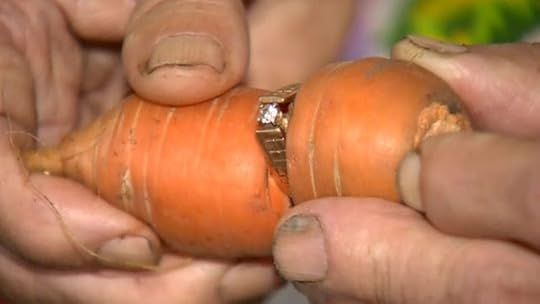
At one point, Mary and her family moved to Camrose, but they still maintain a garden at the old farm, near Armena, which has been in her family for 105 years. About a week ago, as her daughter in law was plucking carrots from the garden, she noticed a really misshapen one that looked like a big fat finger wearing a very tight ring. It turned out that the vegetable was actually wearing a ring.
I knew it had to belong to either grandma or my mother-in-law, because no other women have lived on that farm,” Colleen Daley told reporters. “I asked my husband if he recognized the ring. And he said yeah. His mother had lost her engagement ring years ago in the garden and never found it again. And it turned up on this carrot.”

“If you look at it, it grew perfectly around the [ring]. It was pretty weird looking,” Daley added. “I’ve never seen anything like that. It was quite interesting.”
Mary Grams was obviously ecstatic to get her old piece of jewellery back, and she intends to put it back on her finger, where it belongs. “I’m going to wear it because it still fits,” she said.
Believe it or not, this is not the first time this has happened. Back in 2011, a Swedish woman also made news headlines after finding a ring she had lost 16 years prior wrapped around a carrot in her garden. So if you ever lose round jewellery in your garden, a good way to find it is to plant carrots.

Clancy's comment: Stranger than fiction, eh?
I'm ...
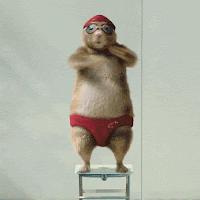

Published on December 11, 2017 12:32
December 10, 2017
11 December 2017 - BALD EAGLES ARE COMMON IN ALASKAN TOWN
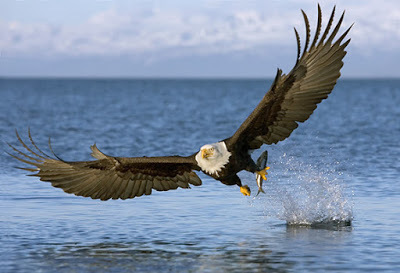
BALD EAGLES ARE COMMON IN ALASKAN TOWN
G'day folks,
The majestic bald eagle is the national bird of the United States, but most Americans are lucky to see one first-hand during their lifetimes. Unless they live in the town of Unalaska, Alaska, where bald eagles are as common as pigeons are in other human settlements.
Unalaska is home to around 4,700 people who have to share their space with over 600 beautiful bald eagles. It looks and sounds like something out of a fairytale, but it turns out that sharing your home with territorial predators also has its downsides. For one thing, you’re more likely to get attacked by a bald eagle in Unalaska than anywhere else in the US, and locals constantly have to keep an eye out for the birds, especially when going near their nests. They apparently hate it when people get too close.

Bald eagles usually nest high up in trees, but the problem is that Unalaska doesn’t have too many trees, so the birds build their nests on cliffs on the edge of town or in man-made structures, which makes them more accessible to nosy humans. It’s easy to get a little too close to an eagle nest without even knowing it, which is why local law enforcement puts up warning signs all through the nesting season – from early June to the end of the summer. But even so, Unalaska sees between six and ten cases in which people require medical attention after encounters with eagles.
“We have these signs that we put up every year to remind people that there are nesting eagles in the area,” Deputy Police Chief Jennifer Shockley told Alaska Public Media. “They will do whatever it takes to protect their young, and that typically includes launching themselves at people and using their talons to lacerate their heads.”
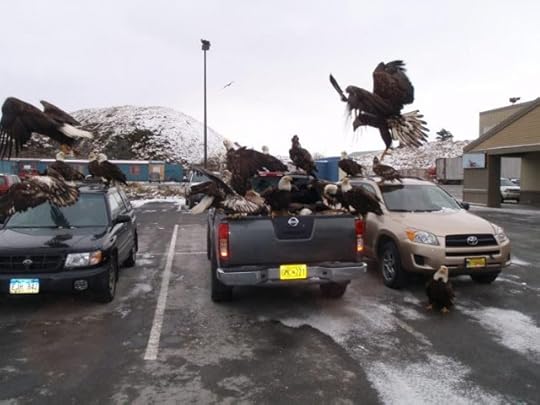
“We actually have had to go in and chase some eagles off the playground equipment at the town park, because a couple of kids had been trapped inside,” Shockley added.
But why are there so many bald eagles in this particular? Unalaska Island is almost 80 miles long, but the birds choose to live in an area of only a few square miles. Well, as you’ve probably already guessed, it has to do with food.
The Alaskan town is located right next to Dutch Harbor, one of the largest fishing ports in the world, and fish is a staple of the eagles’ diet. Every time a boat pulls in to offload, they swoop in and grab as much fish as they can get, before the crew drives them away.
And then there is the local landfill, another favorite place to hang out for the local bald eagle population. They are scavengers, so they spend a lot of time looking for food through trash. Anything that even looks edible will catch their attention.

While the people of Unalaska love their eagles, many of them do consider them pests, kind of like people see pigeons in other places. They make a mess wherever they go, but whereas pigeons will run away when humans approach, bald eagles will attack you if they perceive you as a threat. The post office is famous as one of the most popular nesting places for the eagles, which also makes it a notoriously dangerous place to visit. A simple errand to mail a letter is likely to put in the hospital with deep flesh wounds.
The sight of so many bald eagles in such a small town is especially impressive for newcomers. Seeing them perched on virtually every lamp post, looking for food in trash cans or just flying overhead with their wings fully extended makes quite an impact on people.
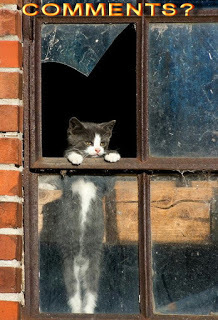
Clancy's comment: I'd love to visit this town and take a million photographs of these birds.
I'm ...

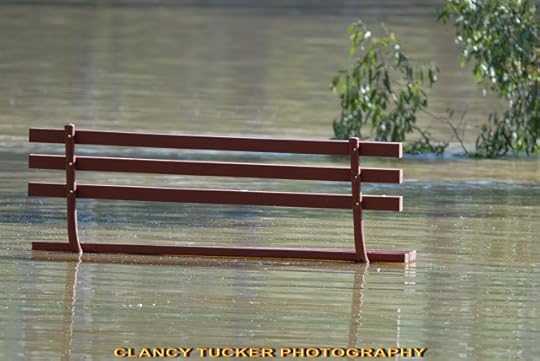
Published on December 10, 2017 12:21
December 9, 2017
10 December 2017 - BILL HUGHES - AWARD-WINNING FILM MAKER

BILL HUGHES - AWARD-WINNINGFILM MAKER -
G'day folks,
I am more than pleased today to welcome and interview one of Australia's most decorated film makers. Prior to this interview, I rang Bill and had a good chat. He most certainly is down to earth, modest and interesting. Now, judge for yourself.
Welcome, Bill ...
TELL US A LITTLE ABOUT YOURSELF AND YOUR FILM-MAKING JOURNEY.
I am now an experienced and award winning film maker with screen credits going back to the 1980's. Including several telemovies (Movies of the Week and Tele-Features – same thing), a cinema feature and hundreds of hours of television drama behind me I feel that my journey is now at a turning point where I want to slow down a bit and pass on bits and pieces of my knowledge and experiences to willing students.
WERE YOU INTERESTED IN FILMS AS A KID?
I absolutely loved the Saturday matinee session at the local cinema. I don't think I missed a Saturday afternoon for years on end. We had comedy cartoons, brief news bulletins and heaps of serials. Mostly cowboys and Indians and Superman, Batman, Wonderwoman et al.
WHEN AND HOW DID YOU BECOME A PRODUCER/DIRECTOR?
I think I actually began this career as a performer for children's parties. I could prepare a story (now a script), manipulate hand puppets (now camera block the action) and perform the play from behind a curtain (now produce and direct). I actually progressed through the industry from being a stage hand at the Tivoli Theatre in Melbourne to a stage hand at GTV9 in Richmond to a music editor and soundmixer at Crawford Productions working on "Homicide". After several years at Crawfords I was promoted to Assistant Producer of "Homicide" and then Director of "The Sullivans". Then I moved to Sydney to be a freelancer directing kids shows and my career took off. Living in Sydney my first big job was of course in Melbourne. Producing "Phoenix" for the ABC. Credit list sort of tells the rest of the story.
WHAT DO YOU ENJOY MOST ABOUT YOUR JOB?
I enjoy the people I work with. The collective nature of the creation of a film or mini series or TV series. Every shot, every situation, every drama moment is different and a new experience to live through and capture on the screen. I also enjoy the whole process of travelling with an idea in a brain through the myriad steps of a story on a screen. I've been able to dabble in most of the steps along the way and each one is a joy.
WHAT IS THE HARDEST THING ABOUT BEING A PRODUCER/DIRECTOR?
The absolute hardest thing about Producing is raising the money to launch a show. Convincing the business hard heads that the idea will work and that the audience will believe the smoke and mirrors when they reveal a great drama.
Directing is only hard when the hours mount up and tiredness sets in. There is a great strain on the brain when as a Director, you answer hundreds of questions each day and every answer has to be a good one and for benefit of the final product.
DO YOU WORK FOR YOURSELF, OTHERS OR BOTH?
I work as a freelancer and in that sense I work for myself but at the same time I take on projects that others have initiated. The others may need an experienced Producer or Director and contract me to make their dream come true. Sometimes an Executive Producer or sometimes a Network or Broadcaster, occasionally a writer.
WHAT WERE YOU IN A PAST LIFE, BEFORE YOU BECAME INVOLVED IN MAKING FILMS?
I was a young man who loved photography, music, people and stories. I made my first film on super 8 and it was a travel-log of Melbourne which ran for 3 minutes. I was about 14yrs old.

WHAT IS YOUR GREATEST ACHIEVEMENT?
Too hard to answer! I have a son, Justin, who is quite an achievement as he in turn has produced a grandson, Max. There we are …. 2 great achievements.
WHAT ARE YOU WORKING ON AT THE MOMENT?
Right now I am Directing "Home & Away" while trying to raise money for a family genre feature film called "T-Bird and the Island of Lost Cats".
Also running mentorships for up and coming film makers …. Cut to the Chase Film Course.
WHAT IS YOUR FAVOURITE SUBJECT?
Spy stories from any era.
WHAT INSPIRES YOU?
Beautifully crafted drama. Most recently on streaming TV - "A Handmaid's Tale"
WHAT DO YOU PREFER TO FILM?
Drama.
DO YOU HAVE ANY TIPS FOR EMERGING PRODUCER/DIRECTORS?
Learn all the rules first …. Then do your best to break them.
WHAT IS THE MOST EXOTIC DESTINATION IN WHICH YOU HAVE WORKED?
In the late eighties I Directed the family genre TV Series "Butterfly Island" which meant spending 6 months in the Whitsunday Passage. Sunshine all day, boats to the Island locations, fresh fish on the way home, Resort accommodation. Exotic by anyone's standards.
DO YOU HAVE A FAVOURITE PLACE OR TIME TO FILM?
It's always great to have afternoon light on water. One of the attractions of Home & Away is the location shoots at Palm Beach, NSW. We shoot on the eastern surf beach in the morning and the western beaches of Pittwater in the afternoons. Great days at the office!
DO YOU PRODUCE DOCUMENTARIES, FEATURE FILMS OR ANYTHING THAT COMES ALONG?
I have directed documentaries in the past and have produced features for cinema and TV but my favourite genre is good drama for TV. I don't produce or direct anything that comes along. There has to be a connection and a story worth telling.
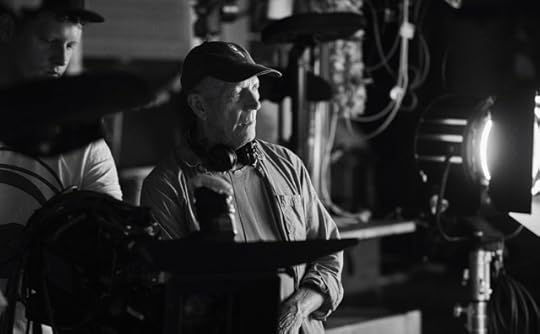
HAVE YOU MADE COMMERCIALS AND VIDEO CLIPS?
No commercials but I did make some video clips in the early days of music video clips. Sebastian Hardy, Jon English, John Farnham, Doug Parkinson.
HAVE YOU MADE UNDERWATER FILMS?
No
WHAT’S THE GREATEST COMPLIMENT YOU’VE EVER RECEIVED?
I think when a viewer wrote to me with the statement "That is the best TV I've ever seen". It was in relation to a series I produced for the ABC titled "Changi".
DON’T BE SHY. TELL US ABOUT YOUR AWARDS.
Various Logies, AFI (Australian Film Institute), New York Festival Awards. Shared in various script awards, actor's awards, music and series awards.
WHAT DID THESE AWARDS MEAN TO YOU?
At the time of the receipt of an award it meant everything. You felt that the work and dedication poured into the product was "worth it". Some years down the track the feeling fades to a distant, dull glow. It's a case of who cares – that was the past and it was good then. So I suppose what I'm saying is that Awards are very much of the moment and are a great boost to the ego at the time. They also propel career choices.
DESCRIBE THE FUNNIEST MOMENT YOU EXPERIENCED IN YOUR WORK?
Imagine we are in the Whitsundays, on a big powerboat with the cast at helm. Myself, the DOP, sound person and continuity girl all at the rear balanced on the transom. The lead actor is to gradually ease the boat forward on Action. I call Action! and the actor thumps the throttle hard forward and the boat virtually stands on its tail. The four of us at the rear backflip into the sea carrying all the camera and sound gear with us. No one was hurt and in retrospect .. Very funny.
We then had a training session for the actor re boating procedure and shot a take 2.
WHAT WAS THE WORST COMMENT YOU EVER RECEIVED?
I once directed a magazine type TV show titled "Sky High" and was told by a network heavyweight that it was the worst TV he'd ever seen. He didn't last long in the industry.
WRITERS ARE SOMETIMES INFLUENCED BY THINGS THAT HAPPEN IN THEIR OWN LIVES. ARE YOU AS A DIRECTOR?
Constantly. My relationships, my personal experiences, my lifestyles all contribute to my understanding and my interpretation of drama.
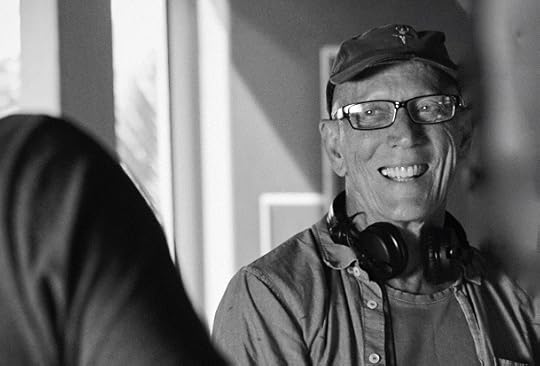
OTHER THAN MAKING FILMS, WHAT ELSE DO YOU LOVE?
I love spending time making multimedia art works. Complex projects but very satisfying. Briefly what I do is:Take a stylistic photo. Print it.Deconstruct the print with a knife, sandpaper, glue and water.Rephotograph the deconstructed image using a different light source. Shadows and shapes.Print again.Deconstruct again. Rephotograph and start adding paint, glitter and more glue and water.Photograph again and then print on aluminium or Perspex.The result is an abstract art piece and I love to find meaning and form in the final image.


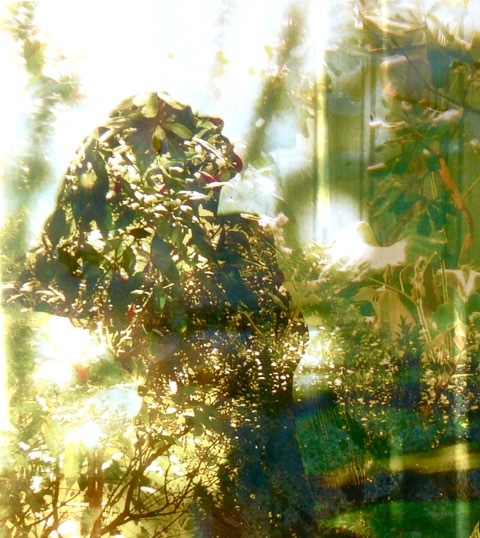
DESCRIBE YOUR PERFECT DAY.
It's summer, I slip on shorts and thongs and head for the water. Early swim and body surf followed by a coffee and banana bread. Then a day's filming or a day spent making my multimedia art piece. Simple things that amuse and involve me in creativity.
WHAT ARE YOUR PLANS FOR THE FUTURE?
Although I have done it once before (10 years spent in Bellingen on an organic farm 1989 thru 2000)I would like to take a tree change and spend time without reference to a daily call sheet.The call sheet is like a reference for a day's shoot. Start around 6am, finish around 7pm.
IF YOU MADE A FILM FOR THE LEADERS OF THE WORLD, WHAT WOULD IT BE ABOUT?
It would be like my early short film titled "Glimpses of the New Age" made in the 1970's. It portrayed a life of self sufficiency, solar power and positive community spirit as imagined then by the hippies in and around Nimbin, NSW. The updated version would be totally different but would carry the same essential message. "Hey you leaders, get your act together and start leading us towards a peaceful, productive, sharing world where love and charity takes precedence over greed and avarice.”
ANYTHING YOU’D LIKE TO ADD?
Thanks for the blog Clancy. Here are some links to my work.

http://www.kuranyapictures.com
www.cttcfilmcourse.com
AWARDS

Logie Award 2002 CHANGI
Most Outstanding Mini SeriesNew York Television Festival 2001Silver Medal – Best Episode of a Mini Series
“CHANGI” Episode One – “Seeing is Believing”Australian Film Institute Award 1998 THE INTERVIEW
Best FilmLogie Award 1994 JANUS
Most Outstanding Achievement in Drama Production
Logie Award 1993 PHOENIX
Most Outstanding Drama.AFI Award 1993Best Episode of a TV Drama
PHOENIX – Ep 12 – “Under Siege”Logie Award 1992PHOENIX
Most Outstanding Series.AFI Award 1992 Best Episode of a TV Series
PHOENIX – Ep 13 “Hard Ball”
New York Television Festival 1991Bronze Medal
Best International Mini Series – “JACKAROO”Logie Award 1991JACKAROO
Most Popular Mini Series.Film Critics Circle of Australia THE INTERVIEW
Best Original Screenplay
Best Cinematography
Best Original Music
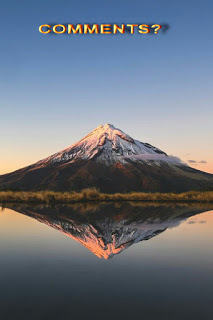
Clancy's comment: Many thanks, Bill. It's been a pleasure ... And so interesting. I would highly suggest that any budding film makers contact Bill and attend his course. Doubt you'd find a better mentor.
Love ya work!
I'm ...
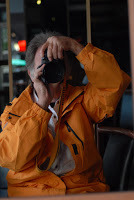

Published on December 09, 2017 13:33
December 8, 2017
9 December 2017 - GREAT QUOTES
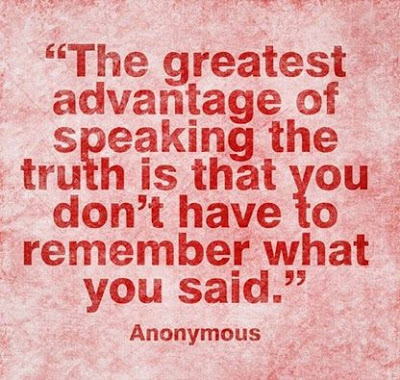
GREAT QUOTES
G'day folks,
Here are some great quotes to fire you up ... With a touch of humour.



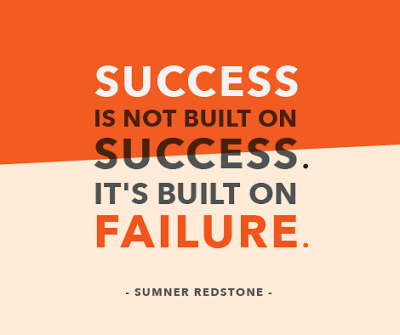
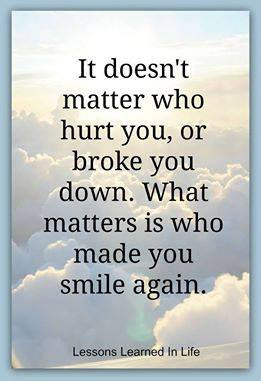
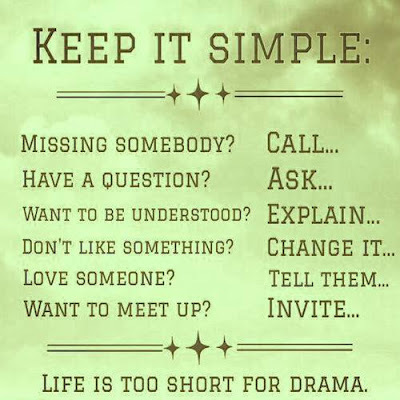

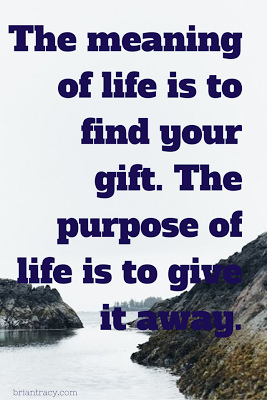
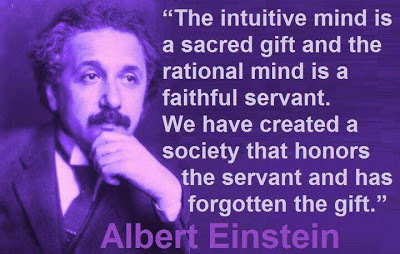
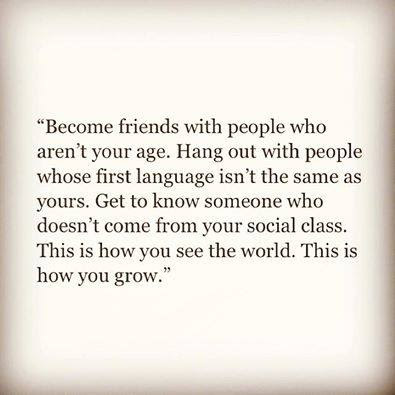






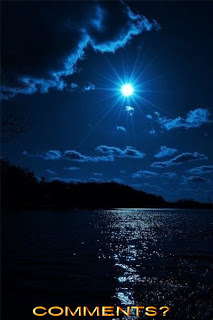
Clancy's comment: I loved the humorous ones today.
I'm ...
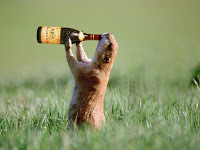

Published on December 08, 2017 12:25



